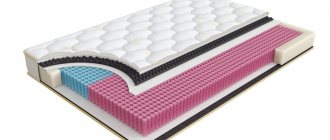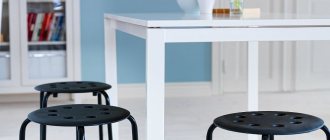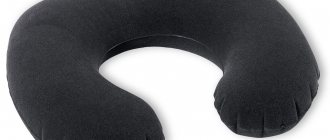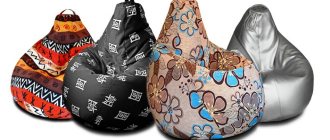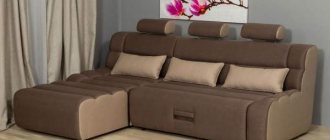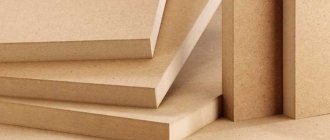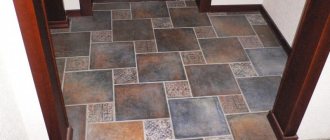Down-feather filler is one of the types of natural fillers, consisting of a mixture of down and feathers from birds - domesticated (goose, duck) and wild (eider, swan, wild duck). Down grows in the plumage of only waterfowl; it protects them from low and high temperatures, that is, from cold and from overheating.
The plumage of birds is divided into flight and contour feathers and down. Fly feathers are never used as filler. Contours (upper body) select only the fluffiest ones. The feather has a hard core (shaft), under which lies down (the lower part of the body), which forms a “layer” and prevents the feather from coming into contact with the body. The down does not have a spine like a feather, but only a core, from which extend beards with processes that interlock with each other and give the down a rounded shape.
Production
The total number of processing stages and operations that fluff goes through is about eighteen.
- The first stage is considered to be raising waterfowl.
- Down is collected from a living bird at a certain period.
- After collection, it is weighed and the quality and degree of moisture are determined, then dried, dusted, sorted and down and feather mixtures are made.
- Then these mixtures are washed in machines with special detergents, squeezed out in centrifuges to a moisture content of 45-50%, and fed into drying machines, where they are finally dried with hot air (at a temperature of 80-120 degrees). Sometimes hot steam cleaning is used.
- Using a fan, the fluff is fed into a collector and pressed into bales.
All raw materials must be tested and veterinary certificates are issued for them. If the fluff comes from disadvantaged areas where poultry diseases occur, it undergoes mandatory disinfection.
How to wash a swan down blanket correctly
Large bedding items such as blankets also require proper care. Knowing how to wash a pillow made of swan's down, owners of a blanket with the same filling can easily achieve its ideal sanitary condition. Despite the size of the product, it can also be machine washed. The optimal washing temperature is 30-40 degrees. The use of aggressive detergents, which could damage the blanket, is prohibited. Spinning using a centrifuge is not contraindicated. When removing the blanket from the drum, shake it well.
Those interested in how to wash a swan's down blanket by hand can do this in a bathtub with soapy water in which the item is placed. Stains are pre-removed. To do this, a product is selected individually based on the characteristics of the contamination.
It is prohibited to use the drying mode in the machine. The washed blanket is dried after spinning in a straightened form.
Categories and properties
The most expensive type of filler is the one that contains the most fluff - 99-100%. It is called Exclusive quality down and has the following properties:
- very durable;
- has low thermal conductivity - the fluffs come into contact with each other and create air layers, forming a barrier that does not let in either heat or cold;
- hygroscopic - capable of absorbing large amounts of moisture and evaporating it into the environment;
- has very low weight - light and delicate down compared to all other fillers, including synthetic ones, has a better weight-to-warmth ratio;
- breathable - ensures good air circulation;
- non-felt - the fluffs do not fall off, as they are very strong, flexible and elastic.
When adding a feather to such a filler, the category decreases. Filling with a down to feather ratio of 95% to 5% belongs to the Premium category, 70% to 30% to the Highest category, 50% to 50% to the First category, 30% to 70% to the Second category.
The more feathers added, the worse the properties of the filler. If small or crushed feathers from killed poultry are added to it (as a waste product from meat production), it will have higher thermal conductivity, low hygroscopicity, greater weight and fallability. It is also necessarily treated with chemicals.
Positive properties and characteristics of the filler:
- suitable for allergy sufferers and people with delicate skin prone to irritation;
- dry quickly and keep warm in cold weather;
- artificial down does not create an environment in which bacteria can multiply;
- lightness and elasticity, the fluff does not clump or bunch up, and the products themselves keep their shape after many washes;
- easy to care for (do not require special storage conditions, are not afraid of machine washing);
- no odors;
- safety of use for children;
- durability;
- airy texture and light weight;
- budget cost compared to natural analogues.
FEEL POWER
There is a special indicator of the quality of down and feather filler - the FEEL POWER
(the higher the better).
It shows how resilient the fluff is and how capable it is of recovering from compression.
If the index value is 750 or higher, this is fluff of exclusive quality, it is collected manually and only in the spring from the chest part of the bird, which is constantly in selective housing conditions.
An indicator below 400 indicates a very low quality of the filler; such fluff was collected from a dead bird.
Raw materials
Gaga
The most valuable is considered to be the down of the northern eider bird, which lives in the Arctic climate of Iceland (eider down is also collected in Canada, Denmark, Finland and Norway). It is collected by hand directly from the nests. She plucks it out of herself to warm her offspring with the warmth of her skin.
All subsequent stages of processing are also carried out manually, since the fluffs have the highest degree of adhesion, and in the filled product they form a dense elastic layer that does not change shape during use. Products with eider down are incredibly light, airy and warm. This type of filler is the highest quality and most expensive.
Goose
Next comes goose, which is also divided into categories. The most valuable is the white goose, followed by the gray goose. Its quality depends on both the breed of bird and the habitat: the harsher the climate in which the goose lives, the higher the quality. Canadian is considered the best. Next come the European breeds: Hungarian, Italian, North German and others.
The down of birds that live in harsh conditions, but fly to countries with warm climates (Turkey, China, Germany) for the winter, is of less quality.
Duck
In addition, duck plumage has a specific smell and requires additional processing. Canadian duck down is of very high quality.
Chicken
It only has a feather. Used for the production of goods in the lowest price segment.
Application and care
The down-feather mixture is used as a filler for those products that are intended as insulation. These are winter outerwear (down jackets, jackets, coats) and bedding (blankets and pillows).
Cloth
For men's, women's and children's down jackets and overalls, down is additionally treated with water-repellent compounds. Usually the filler of the Highest category (70/30%) is used. Such clothes are very light, but protect well from winter frosts.
Modern down jackets are sewn in such a way that fluff and feathers do not come out through the layer of outer fabric. To do this, the filler is placed in special fabric bags, additional cushioning fabric is used, and the seams used to quilt the product are treated with special compounds. To prevent such a down jacket from letting in the cold in the quilting areas, the bags are overlapped.
Care
It is recommended to have the down jacket cleaned, but machine washing with liquid detergent on a delicate cycle is also allowed. To prevent fluff from forming clumps, three tennis balls are placed in the washing machine.
You should not wring out or dry the product in a machine; you should allow the water to drain by laying the down jacket on a horizontal mesh or grid. Then dry with a fan or hair dryer.
Bed dress
And with such natural filling they are very light, soft and warm. They keep their shape well and do not fall off. It is recommended to fluff your pillows by hand every morning (not in the evening).
Care
For such products, dry cleaning in specialized institutions is recommended. You can wash it yourself in a machine at a temperature of 40-60 degrees. Only high quality items are washed. In cheap ones, the filler is more fragile and can be damaged.
Do not dry in direct sunlight or on a radiator. It is best to do this in a well-ventilated area or outside in hot weather (only in the shade), shaking occasionally.
Down duvets and pillows are contraindicated for allergy sufferers and asthmatics, but many modern manufacturers carry out special anti-allergic treatment of raw materials.
How to wash a swan down pillow
It is not for nothing that pillows made from artificial filler are popular, because having excellent quality characteristics, they do not require the same care as products made from natural materials. When purchasing 100% polyester bedding, you need to familiarize yourself with how to wash faux swan down pillows to ensure you can enjoy the comfortable items for as long as possible. The most delicate and finest microfibers, whose quality characteristics resemble down, easily take shape, providing maximum comfort while sleeping. The advantages of filler with a spherical fiber structure include the fact that products with this material can easily withstand both hand and machine washing.
Tips on how to wash pillows with swan's down so that the filling does not form clumps and remains light and airy for a long time.
To wash in an automatic machine you need:
- before putting it in the drum, carefully inspect the pillow for the integrity of the pillowcase, so that during washing, microfibers do not get into the unit’s container and cause damage;
- The product can only be machine washed on a delicate cycle;
- you need to strictly ensure that the temperature of the liquid does not exceed 40 degrees, because artificial down does not tolerate high temperatures;
- The use of bleaching agents containing chlorine is strictly contraindicated;
- preference should be given to liquid detergents;
- Spinning is allowed, but drying a swan's down pillow in a drum is not allowed.
After washing, the product must be placed on a horizontal hard surface, having previously been covered with a plain cotton fabric. It is recommended to dry the pillow in a well-ventilated area, periodically turning it over and shaking it. You cannot iron the product, as this can damage the structure of the fibers.
Service life
Clothes and blankets filled with goose down can last up to 20 years. But it is recommended to change bedding (pillows and blankets) every few years (or clean it once a year), as they absorb all the substances that are released through human skin.
Thanks to modern technologies, down and feather filling is a very high-quality and environmentally friendly material. With proper care, products with it will last a very long time.
Buyers ask questions: how is artificial down produced, what is it used for, and is it true that it is safe? Which material do you prefer – natural or synthetic? Read more about the properties, characteristics and scope of application of artificial swan down.
During the production process of the material, polyester microfibers are twisted into spirals and treated with silicone. Thus, artificial swan down is a soft synthetic material. The finished fluff looks like natural fluff and has a number of similar characteristics. It is a soft, fluffy material to the touch that instantly regains its shape after being compressed.
Hand washing a faux down pillow
You can tidy up your favorite pillow without a washing machine. This requires some effort.
- You should make sure there is a spacious container in which the pillow should fit. Large basin, trough or bathtub.
- The water temperature should be up to 40 degrees.
- The manufacturer's information on the label is carefully studied. Particular attention is paid to approved detergents, which must be diluted in water and foamed.
- An artificial down pillow is immersed in a container of water, and the product is washed with kneading movements.
- The pillow is rinsed in several waters. You can add conditioner to the water so that the fibers straighten out faster and the product can regain its original shape without losing its elasticity.
- The pillow is gently wrung out, do not twist it. Allow any remaining moisture to drain by placing the product on a lattice base.
- Dry in a horizontal position without hanging the product.
Sometimes housewives, knowing how to wash swan's down, prefer to have their pillows dry cleaned. But it should be remembered that only specialized reagents can be used to clean the surface of the product. Also, to ensure a restful sleep, it is recommended to ventilate the pillow in the fresh air at least 2 times a year. This will saturate the microfibers with oxygen, ridding the product of dust.
Artificial down: benefit or harm?
Artificial down
Currently, a considerable amount of synthetic fabrics and fillers are produced. The word “synthetic” itself means that the material is obtained chemically, and is not taken ready-made from nature. The production method does not mean that synthetics are inferior. Most often, it’s the other way around – chemical materials are more wear-resistant and hold their shape better. For example, the polyester fibers that make up artificial down provide minimal creasing, strength, and resistance to organic solvents.
Analogs of artificial swan down include:
- holofiber (lasts up to 10 years);
- (also lasts about 10 years);
- synthetic winterizer (average service life is only a few years).
All these materials also consist of polyester fibers.
Real down from the chest and belly of swans is collected by hand during the birds' natural molting. The quality of natural down depends on the breed. From one adult bird, only 40 g of pure fluff is obtained (feathers make up the bulk).
Even powder puffs are made from this material, and household items or natural insulated clothing can be very expensive. Buying synthetic material helps protect living creatures and is therefore eco-friendly.
Filler composition
Modern pillow filling with swan down is thin microfibers that are curled into a spiral during silicone treatment. Outwardly, they look like small soft balls. Silicone treatment is carried out to give the material durability and improve consumer properties. Artificial down contains tree resin and shellac, making the fibers strong and elastic. The material itself combines the properties of natural and synthetic filler; it is very soft and gentle to the touch, retains heat perfectly, is practical and wear-resistant.
Pillows with swan down do not harbor fungus, mold, or dust mites, and they do not cause allergies. Clean, hygienic material with excellent ventilation. Thanks to its elasticity, the fibers do not roll down or come out through the pillowcase like bird feathers, and the pillow itself does not deform even with prolonged use. At the same time, the service life of such bedding is a maximum of 5 years, and the weight is much lighter than similar products with natural filling. A cover made of calico, satin, poplin or more expensive natural silk is an ideal “garment” for a pillow with synthetic filling.
Material characteristics
Like any synthetic or natural material, artificial down has its positive and negative sides. It is worth noting that the list of positive aspects is impressive:
- the material is suitable for people prone to allergies and sensitive skin;
- synthetic fiber does not create a favorable development environment for living organisms, so artificial down is not susceptible to fungi and dust mites;
- it is a light and weightless material;
- elastically holds its shape, does not get lost or cake;
- It is easy to care for artificial down - it can be washed in a regular washing machine and no special storage conditions are required;
- the material does not absorb foreign odors, and also does not have a specific aroma;
- the fluff dries very quickly;
- the material retains heat perfectly;
- air passes freely through the down fibers, providing air exchange;
- the fabric cover easily holds the artificial down and does not allow it to fall out;
- artificial swan down is much more economical than natural down;
- long period of operation - with proper care, the material will last about five years.
This material has very few disadvantages:
- almost does not absorb moisture - a sauna effect can occur under a swan blanket;
- may cause overheating when used in a well-heated room;
- accumulates static electricity and requires additional treatment with an antistatic agent.
Secrets of swan down production
There are two options for such filler: natural and artificial. The first is collected by hand from the abdomen or chest area of adult swans. This happens during the molting season, and only about 40 grams of fluff is removed from one individual, so feathers must also get into the pillow, along with the fluff.
Reference! A product with natural swan down is expensive. Therefore, if you want to please yourself with such a purchase, be prepared to shell out a considerable amount.
To preserve nature and reduce the cost of goods, and therefore increase their availability, there is artificial down. All its indicators are similar to natural ones . And if there is no difference, why pay more? Artificial down retains its shape perfectly, does not absorb unpleasant odors, and is easy to clean.
During production, polyester fibers in the form of small diameter balls are exposed to high temperatures. This allows you to pull out many thin threads, each of them is coated with silicone and twisted into a spiral. The filler becomes durable and elastic.
Advantages
Swan down pillows are popular due to their advantages:
- The product perfectly restores its shape. After sleep it will return to its original state.
- No lumps appear after washing. The problem with many fillers is precisely this. There will be no such problems with swan down.
- Does not absorb foreign odors and does not have its own. The scent of the pillow is neutral and will not be an irritant.
- The filling remains within the pillowcase and does not come out. There is no need to worry that you will wake up covered in fluff particles or that your entire sleeping area will be covered in it.
- The product is lightweight. This applies not only to natural raw materials, but also to their artificial analogues.
- Machine washable. Just select the delicate mode.
- The material is hypoallergenic and does not become a “home” for fungi and bacteria.
- High softness. Sleeping on such a pillow is pleasant and comfortable.
- If we talk about a product made from artificial down, then its cost is quite affordable.
- The material is safe for children. You can use these pillows for cribs.
- No special complex care is required. Taking care of the material is very simple.
- Long service life. You can consider buying a swan down pillow a profitable investment. It will delight its owner for many years.
Flaws
This product also has disadvantages, but they are much fewer than the advantages:
- Low hygroscopicity. This means that the pillow is not suitable for people with excessive sweating.
- The accumulation of static electricity, which negatively affects the condition of the hair. An antistatic agent can solve the situation. Just apply it to the fabric of the bedspread.
- The softness of the pillow, which does not properly support the neck, can lead to slight discomfort.
- Should not be used by those who have problems with the cervical spine. There are special pillows for such cases. Products made from swan down can only increase the pain.
The listed disadvantages are not critical. Many of them can be eliminated without denying yourself the purchase.
Where is fluff used?
The soft and delicate material is mainly used as filler and insulation. Using this material you sew:
- outerwear (jackets, down jackets, coats);
- insulated winter suits (pants, overalls);
- bedding sets (pillows, blankets);
- children's goods (soft toys).
Pillows are especially popular
Pillows with swan down are especially popular - they retain their shape with daily use, help keep your head in the right condition, do not smell of anything foreign, and the down does not leave the cover and does not prick. A down pillow can be loaded into a washing machine and simply washed, without the product being damaged in any way.
When purchasing products with swan down, you need to look at the composition indicated on the label. If indicated (the second name for polyester), it is artificial down. The affordable price also indicates that the material was chemically produced and not collected from a live bird.
In the washing machine
Firstly, many users advise not to wash down pillows, but to simply purchase new products. This is due to the fact that after each washing process this type of filler greatly loses its positive qualities .
Secondly, there is an opinion that fluff should not be put into the washing machine at all. Both the first and second assumptions are incorrect. Swan down can be washed well both in the washing machine and by hand.
For the correct process you need:
- high-quality preparation of the product,
- expensive powder or other household product,
- choosing the appropriate temperature mode for the washing machine.
Basic rules for high-quality washing of pillows with swan down:
Selecting the correct mode . The best mode for fluff is delicate. But we should not forget about the water temperature, which should not exceed 30 degrees. If the delicate mode in the washing machine is automatically set to more than 30 degrees, then this parameter should be adjusted manually or eliminated altogether.- Selecting the correct spin mode . The correct spin for products made from swan filler is no more than 400 revolutions. If this parameter is higher, this can significantly damage the filler.
- Choosing a good powder . The most basic parameter is the correct choice of washing powder or gel. Typically, such products are expensive, but they are cheaper than buying new pillows.
Nowadays you can buy special capsules for washing pillows in household chemical stores. In the middle of the capsule there is a gel that dissolves in water during washing.
Such products not only wash fluff efficiently, but also have a very reasonable price.
Care
The rules of care are not complicated
Artificial swan down does not require special care, like natural one. It is enough to wash the product at temperatures up to 40 degrees and dry it flat to keep the product’s shape longer.
Synthetic down is afraid of elevated temperatures and open sources of fire, so it is better to dry it naturally. It is also allowed to spin clothes in a washing machine centrifuge. This material is only “afraid” of aggressive bleaches that disrupt the microfiber structure. When washing pillows, it is best to use the delicate cycle to avoid damaging the cover.
After washing, you need to shake the item so that the fluff does not fall off. Blankets and pillows with artificial down need to be aired outside or on the balcony several times a year. When storing products in vacuum bags, their shape does not deteriorate.
Subtleties of care
As already mentioned, polyester microfiber is easy to care for. To make products with Thinsulate last longer, you need to follow a few simple rules:
- Ventilation.
Once every 3-6 months, pillows and blankets need to be aired. To prevent heavy dusting, it is worth vacuuming the pillow 2-3 times a year or cleaning it in other ways. - Wash.
The ideal option is hand washing. But if you don’t have time, machine washing is quite possible. They are not afraid of delicate machine wash. - Drying.
Thinsulate products cannot be dried in a drum. They don't really need it. Bedding sets dry quickly in a vertical position in the air. It has good air circulation, which means the pillow dries quickly. - Storage.
Simply fold the blanket into a vacuum bag. If you have neck pain or to prevent osteochondrosis, you should choose products with an orthopedic effect.
Let's sum it up
Artificial swan down is a modern and practical material that is used as filler and insulation. This fluff is in no way inferior to natural fluff. Artificial material is easier to clean, does not absorb odors, does not cake and holds its shape.
Polyester fibers are used to produce down - they are obtained by combining polybasic acids at the molecular level. In this case, live swans do not suffer and manual labor, which is used to assemble natural fluff, is saved.
Finished products retain density and elasticity because the structure of the polyester fibers does not allow them to slip through the textile weave and seam lines.
Artificial down is widely used in the manufacture of various warm clothes; it is easy to wash and retains its softness and shape for a long time.
Let's compare various natural and artificial fillings for pillows:
White as snow, stuffed like fur... The answer to this riddle is simple. This is, of course, a goose, which, like the duck, has long been present in the folklore of almost all countries of the world.
The plumage of these birds is truly unique. In addition to the so-called contour feathers, they have down, which creates an air cushion that reliably retains heat. He came out unscathed like a goose - they say about a person who doesn’t care about anything. After all, geese and ducks not only fly, but dive and swim, while remaining dry and not freezing.
People have been using the amazing thermal insulation properties of goose and duck down for a long time. Information about domestic geese and ducks has been known since antiquity. All birds have down feathers, including chickens, but they have nothing in common with the down of waterfowl.
Goose and duck down still remains one of the most valuable natural fillers and insulation materials.
.
Products made from swan down
Elastic soft hypoallergenic material is used as filler and insulation. Artificial swan down is used to fill pillows and blankets and is also used for sewing children's toys. Downfill is used as insulation when sewing outerwear.
In clothes
Good thermal insulation properties, softness of the material, and its ability to retain its shape have become decisive arguments for sewing children's and adult jackets and overalls. Clothes made from swan down made of polyester fiber are very warm and light. When washed, jackets with artificial filling can be easily returned to their original form, and their cost is much lower than products with natural insulation.
In pillows
Pillows filled with artificial swan down are the most popular products. Soft, lightweight, retaining their shape after daily use, they help keep the head in the correct position and then quickly restore its previous volume. They are suitable for allergy sufferers because they have absolutely no odor and pathogenic microflora and mites do not live in them. The down is in snapbond - a durable and dense cover made of synthetic material, so it does not prick and does not fall out of the pillow through the seams and interweaving of threads.
Pillows made from artificial swan down can be safely machine washed - they clean well, dry quickly and restore their previous volumes. Despite all the positive qualities, the products are quite inexpensive. You can learn more about the characteristics of pillows made of artificial swan down on the website in the catalog.
In blankets
Filling made from swan down substitute is a popular material for making blankets. Ease of use, hypoallergenicity, lightness of blankets with this filling, as well as an affordable price attract buyers. Blankets are easy to wash and dry quickly without losing their shape. Blankets of different sizes are made from polyester fiber, for children and for adults. There are models for different seasons - winter, summer, all-season, which use different amounts of filler. Like natural down, synthetic fiber has different densities - the higher it is, the warmer the blanket will be. Buyers choose artificial down blankets for their lightness, ease of use and care, and most importantly, affordability.
Which down is better: goose or duck down?
The undisputed favorite is considered to be the down of a wild duck - the eider, nesting in the Northern latitudes. It is collected from abandoned nests, which birds line with down they have plucked from themselves. Needless to say, the down of birds that have adapted to raise their offspring on the shores of the Arctic Ocean has truly unique properties. It was never possible to tame these wild ducks. Therefore, eider down is very expensive and is more often used for making down jackets than. A blanket with such a valuable “filling” is comparable in price to an inexpensive car.
Domestic ducks also produce very high-quality down, but in terms of its characteristics it is significantly inferior to goose down.
Goose down can also be different. The most valuable raw materials are obtained from geese raised in the northern regions. Their down is lighter and warmer than that of their southern relatives. Very high-quality and expensive down is produced, in particular, by the white Siberian goose and Arctic breeds, which rightfully compete with the eider duck.
The characteristics and price of down also depend on the conditions in which the bird was raised. The down of free-grazing geese is always of higher quality and warmer.
- eiderdown
- down of northern and arctic geese
- goose down
- duck down
But even here, not everything is simple. For example, musky duck down is valued almost as much as goose down.
Goose down and duck down: what's the difference?
The structure of the down and feathers of ducks and geese is almost the same, but there is still a difference. To avoid falsification, manufacturers are especially attentive to the specific origin of raw materials. There are, in particular, special devices that allow you to accurately identify fluff. So, at 100x magnification, the monitor shows the difference in the beards of the down-feathers of geese and ducks.
Goose down is larger, more voluminous and lighter
. Duck down feathers are slightly smaller, but denser and heavier. The thing is that the “core” to which the fluff fibers are attached in duck down is slightly larger than in goose down.
All waterfowl protect their feathers with the secretion of sebaceous glands, but duck down, unlike goose down, contains much more of this fatty protection. Thus, purification of raw materials requires additional efforts from manufacturers. To destroy the specific odor, duck down has to be seriously processed using special detergents, which shortens the service life of such down in pillows and blankets. If it can last 20-25 years, then duck down can last only 10-15 years.
And finally, last but not least. The goose turned out to be the only poultry that allows itself to be plucked during its lifetime. During down collection, only mature feathers are removed, which guarantees the quality of the final product.
How is fluff harvested?
If eider down is collected from nests only once a year, then goose down, without harm to the birds, is obtained during their natural molting - in autumn and spring or early summer.
Geese live for 5-7 years, reaching a weight of up to 10 kg. During the molting period, each individual can produce up to 300 grams of feathers, including 50-60 grams of down. That is, almost a kilogram of fluff during the productive period.
This down, which is obtained from a live bird, is especially prized. Considering that the weight of the filler in a 150x200 cm duvet (all-season version) is approximately 500-600 g, a simple calculation shows that to produce one duvet you will need to collect down from at least 10 birds. This largely explains why duvets are so expensive
.
Unlike goose down, duck down is obtained only after the bird is slaughtered. The average weight of a duck does not exceed three kilograms and can yield a maximum of 600 grams of raw material, which still needs to be sorted into down and feathers.
However, all organic raw materials are sorted into fractions, washed, disinfected and dried, and fluff is no exception. Strict standards for technological processes have been established, which are strictly followed by both European and Russian manufacturers.
